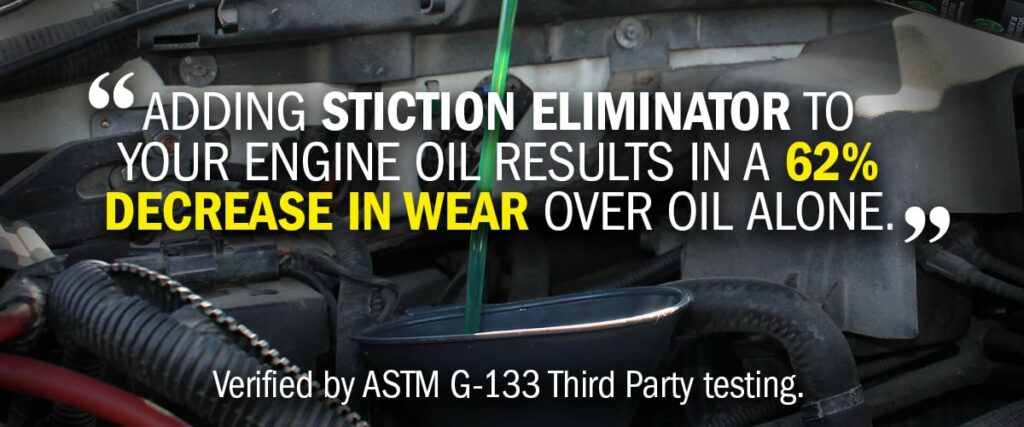
Use Stiction Eliminator In Your Car
For a long time, STICTION ELIMINATOR has been a problem-solving oil additive for the diesel industry, and if you’re reading this, you have most likely heard or experienced first-hand the difference it makes inside a diesel engine. With continued research and development, STICTION ELIMINATOR works just as well in gasoline engines, and we continue to hear miracle stories on a regular basis.
It is true that the oil of a diesel engine becomes much dirtier than that of a gas engine, but that does not mean oil is enough to protect your gas engine from damage and wear over the years. Stiction knows no limits and as damaging inside your gas engine as it is inside your diesel engine.
Oil is oil, and the life cycle of stiction remains the same across them all. And with today’s modern engines operating at even higher temperatures and tighter tolerances, oil coking or stiction is even more of a problem. Modern day engine crankcase temperatures heat and vaporize the light ends of the engine oil creating oil vapors and mists. These vapors oil mists in the crankcase are sucked out of the crankcase via the positive crankcase ventilation system and are re-directed into the intake system of the engine to be burned off. We may recognize this as burning engine oil. However much of these vapors and mists adhere to the inside of the intake manifold and wind up as deposits on the intake valves. Many times, these deposits can lead to drivability issues, performance and fuel economy losses.
In recent years auto makers have added turbos, cylinder deactivation and other fuel-saving measures to increase efficiency. While great for saving money at the pump, underlying stiction issues have begun to show up. The oil will cook and bake in the turbo bearing after use and the lifters and valves of deactivated cylinders that can lead to failure of the turbo, lifter issues and poor performance.
The scary thing about stiction is that it is the “silent killer” of engine performance and can be difficult to detect. And once it’s there, it’s not just going to is drain out at your next oil change. Stiction forms and attaches to the internal components of the engine so even changing your oil doesn’t solve the issue unless you take specific action to scrub it free. We see this all the time with customers who have recently bought used cars. Even those considered to be in “Excellent condition” often have some percentage of stiction that you can’t see before you drive it away and but will be robbing you of fuel economy and slowly damaging the engine.
So how do you know if you have stiction in any of your gas vehicles? Take what’s left in that bottle of STICTION ELIMINATOR off your shelf in your garage and treat the oil of your gas motors. Watch your fuel economy increase, listen to your motor quiet down, and feel the power start to restore itself back to the way it used to be the same way it did in your diesel. That’s how you know if you HAD stiction.

